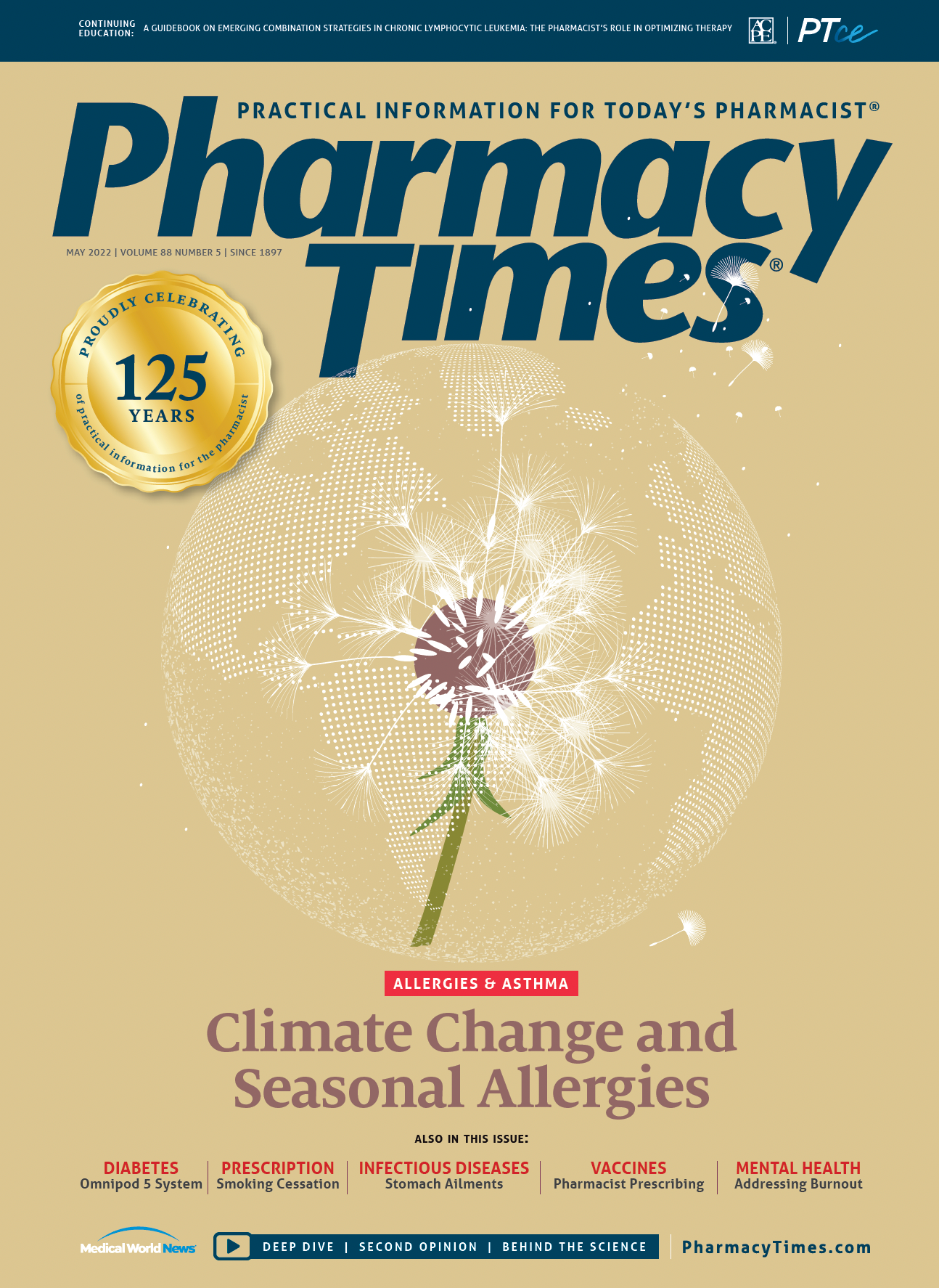Publication
Article
Pharmacy Times
Insomnia Is Hiding in Plain Sight
Author(s):
Pharmacists must communicate more than drugs and dosages and offer counseling on lifestyle and sleep habits.
Up to 30% of adults experience insomnia, and pharmacists need to know how to identify this condition that many patients think is normal and do not discuss.1
Insomnia is not just difficulty falling asleep but also refers to difficulty staying asleep and early morning awakenings with trouble falling back asleep.1-3 Regardless of the type of insomnia, this condition can have significant consequences for patients. Chronic illness, difficulty concentrating, and irritability are just a few problems that may occur in those who suffer from insomnia.2-5
Insomnia can be difficult to spot. In our fast-paced society, everyone seems to have difficulty sleeping from time to time. Insomnia is chronically underreported5 and patients may rarely seek help, because the condition is often viewed as benign and inconsequential.6-8
When patients were asked about reasons for not seeking treatment, the 5 most common answers were as follows8:
- I did not recognize the difficulty with sleep was an illness.
- I have developed my own treatments or ways of coping.
- I thought difficulty with sleep was an expected response to a life situation.
- I thought it was something I should be strong enough to manage myself.
- I thought the problem would get better by itself.
Speak Up, and Help
A 2019 study assessed the likelihood that community pharmacists would offer counseling when patients purchase OTC sleep aids. It found that pharmacists rarely questioned patients’ medical history or symptoms during the sale. Most often, pharmacists provided only the recommended dose and administration time—information that patients can read on the label. They never offered information to patients regarding proper lifestyle and sleep habits.4 The study shines light on an obvious lack of adequate counseling in the community setting. As the most accessible health care providers, community pharmacists can be a vital resource for patients with insomnia. Knowing the risk factors for insomnia (Table 19) can prompt pharmacists to identify those who may be struggling.

One key area is for pharmacists to identify patients who may be experiencing insomnia as an adverse effect (AE) of a medication.5 Prescription medications are widely used across the United States, with nearly 60% of adults reporting daily use, and certain classes can cause insomnia as an AE (Table 210).9,10

Questioning Habits
Proper sleep habits can help ensure a better night’s sleep. Habits such as background noise, excessive blue light before bedtime, irregular bedtimes, and staying up late can negatively affect sleep quality.10-12 Pharmacists should screen patients struggling with insomnia to determine whether the cause of their sleep problems stems from poor sleep habits. Asking open-ended questions can help gather information regarding sleep habits.11 These include the following:
- How often do you use alcohol, nicotine, or other stimulants before going to bed?
- How often do you use a cell phone or tablet or watch television before bedtime?
- What is your nightly bedtime routine?
- What is your typical bedtime?
- When is your last meal of the day?
The CDC recommends multiple tips for improving sleep habits. These include making sure the bedroom is set up for optimal sleep with a comfortable temperature (cooler is better) and dim lights, and is free from excessive noise. Avoiding alcohol, large meals, and stimulants before bedtime and being consistent with a bedtime routine are also critical.12
Conclusion
Pharmacists can identify insomnia and offer the necessary interventions to combat its repercussions. Provided there is a proper assessment and patient counseling, insomnia is treatable by both pharmacologic and nonpharmacologic means. Most often patients will not say they are suffering from insomnia, so it is crucial that pharmacists use contextual clues and maintain an empathetic, questioning attitude when assisting patients. Knowing what to look for and asking the proper questions can allow pharmacists to make a difference in patients’ sleep quality.
About The Author
Connor Walker, PharmD, is a multispecialty clinical pharmacist at Yale New Haven Health in Connecticut.
References
1. Suni E. Sleep statistics. Sleep Foundation. Updated March 11, 2022. Accessed April 10, 2022. https://www.sleepfoundation.org/how-sleep-works/ sleep-facts-statistics
2. Insomnia. Mayo Clinic. October 15, 2016. Accessed April 12, 2022. https:// www.mayoclinic.org/diseases-conditions/insomnia/symptoms-causes/syc-20355167
3. Morin CM, LeBlanc M, Daley M, Gregoire JP, Mérette C. Epidemiology of insomnia: prevalence, self-help treatments, consultations, and determinants of help-seeking behaviors. Sleep Med. 2006;7(2):123-130. doi:10.1016/j.sleep.2005.08.008
4. Wazaify M, Elayeh E, Tubeileh R, Hammad EA. Assessing insomnia management in community pharmacy setting in Jordan: a simulated patient approach. PLoS One. 2019;14(12):e0226076. doi:10.1371/journal.pone.0226076
5. Basheti MM, Gordon C, Bawa Z, Grunstein R, Saini B. Sleep health management in community pharmacy: where are we and where should we be heading? Res Social Adm Pharm. 2021;17(11):1945-1956. doi:10.1016/j.sapharm.2021.02.011
6. Torrens Darder I, Argüelles-Vázquez R, Lorente-Montalvo P, Torrens-Darder MDM, Esteva M. Primary care is the frontline for help-seeking insomnia patients. Eur J Gen Pract. 2021;27(1):286-293. doi:10.1080/13814788.2021.1960308
7. Patel D, Steinberg J, Patel P. Insomnia in the elderly: a review. J Clin Sleep Med. 2018;14(6):1017-1024. doi:10.5664/jcsm.7172
8. Stinson K, Tang NK, Harvey AG. Barriers to treatment seeking in primary insomnia in the United Kingdom: a cross-sectional perspective. Sleep. 2006;29(12):1643-1646. doi:10.1093/sleep/29.12.1643
9. Do D. Trends in the use of medications with insomnia side effects and the implications for insomnia among US adults. J Sleep Res. 2020;29(4):e13075. doi:10.1111/jsr.13075
10. Bonnet MH, Arand DL. Risk factors, comorbidities, and consequences
of insomnia in adults. UpToDate. Updated April 15, 2022. Accessed April
26, 2022. https://www.uptodate.com/contents/risk-factors-comorbidities-and-consequences-of-insomnia-in adults?search=drugs%20causing%20insomnia&source=search_result&selected Title=1~150&usage_ type=default&display_rank=1#H1582169839
11. Chung KF, Lee CT, Yeung WF, Chan MS, Chung EW, Lin WL. Sleep hygiene education as a treatment of insomnia: a systematic review and meta-analysis. Fam Pract. 2018;35(4):365-375. doi:10.1093/fampra/cmx122
12. Tips for better sleep. CDC. Updated July 15, 2016. Accessed April 11, 2022. https://www.cdc.gov/sleep/about_sleep/sleep_hygiene.html






